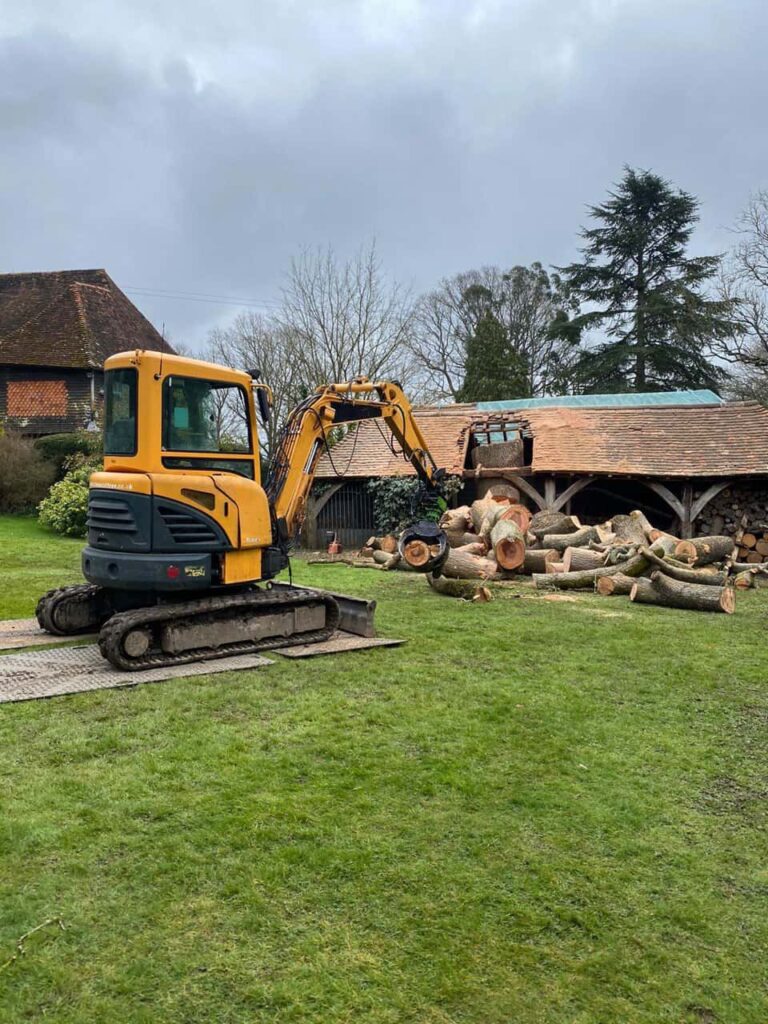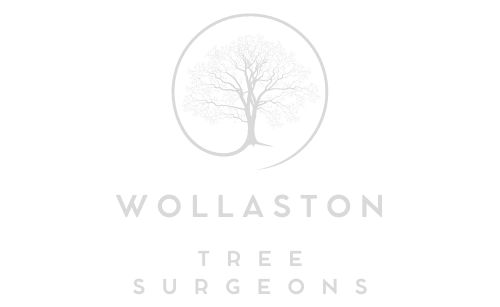Trees That Fell Themselves: Warning Signs You Might’ve Missed
When a tree falls without warning, it can cause significant damage to property, pose serious safety risks, and leave homeowners wondering what went wrong. The reality is that most trees that “fell themselves” were giving off warning signs well before the final collapse. At Wollaston Tree Surgeons, we’ve responded to many such incidents across Wollaston, Northamptonshire — and in nearly every case, the signs were there, just unnoticed or misunderstood.
This guide highlights the most common warning signs that a tree may be on the verge of failure and explains how early action can help you avoid disaster.
Why Trees Fall Without Warning
Trees rarely fall without cause. Even in high winds, healthy, well-anchored trees are unlikely to topple unless other factors have compromised their stability. Root problems, structural weakness, decay, and disease are often to blame. When left unchecked, these issues develop quietly over time until the tree can no longer support its own weight.
The Subtle Warning Signs You Might Have Missed
1. Cracks in the Trunk or Major Branches
Small or large vertical or horizontal cracks in the bark may indicate internal weakness or splitting.
- Cracks can be hidden by foliage or bark and often go unnoticed.
- Major splits at limb junctions can signal that the tree is under structural stress.
What to do: Regularly inspect your tree for cracks or peeling bark, especially after storms or high winds.
2. Leaning or Sudden Change in Angle
A tree that begins to lean or increases its lean over time may be shifting due to root plate failure or compromised soil.
- Not all leans are natural — some indicate that the tree is becoming unstable.
- Soil lifting around the base is a strong warning sign of impending failure.
What to do: Monitor trees after periods of heavy rain or high winds and note any lean changes.
3. Mushrooms or Fungal Growth at the Base
Fungi such as honey fungus growing near the roots or on the trunk often signal decay beneath the surface.
- Fungal presence means internal rot could be compromising the strength of roots or the lower trunk.
- Wood decay fungi feed on the structural tissues that keep the tree upright.
What to do: If you notice fungal growth, contact a qualified arborist for a decay assessment.
4. Sudden Limb Drop (Summer Branch Drop)
Some trees, particularly mature ones like oak or beech, may suddenly drop large branches in still weather — a phenomenon known as summer branch drop.
- This typically occurs during hot, dry spells and is associated with internal dehydration or stress.
- These events are unpredictable and dangerous.
What to do: Have mature trees checked regularly during the warmer months, especially if limbs overhang gardens or driveways.
5. Visible Root Damage or Soil Movement
Roots are the foundation of a tree’s stability, and when they’re compromised, the whole tree is at risk.
- Construction work, compaction, or changes in drainage can damage root systems.
- Look for signs of exposed roots, heaving soil, or dieback in the upper canopy.
What to do: Avoid disturbing the ground near trees and report any signs of movement to a tree specialist.
6. Dead or Dying Branches in the Crown
A canopy full of deadwood may indicate internal decay or root failure.
- Dead branches are often the first outward sign that a tree is in decline.
- These limbs may break off in strong winds or fall naturally under their own weight.
What to do: Schedule regular crown inspections, particularly after storms or extreme weather.
7. Discoloured Leaves or Premature Leaf Fall
If your tree is shedding leaves out of season or showing unusual colouring, this may be a response to internal stress.
- Discoloured, sparse or wilting foliage can signal disease, root stress, or nutrient deficiency.
- A thinning canopy is often a precursor to more serious health issues.
What to do: Act early. An arborist can identify underlying causes before they lead to structural failure.
Prevention Is Key: Regular Tree Surveys
At Wollaston Tree Surgeons, we offer tree health assessments and risk surveys across Wollaston, Northamptonshire to help homeowners and property managers spot potential hazards before they escalate. Regular tree surveys include:
- Structural evaluations of trunks and branches
- Root zone assessments
- Identification of pests, disease, and decay
- Recommendations for pruning, bracing, or removal
With professional guidance, you can take preventative action and preserve the health and safety of your trees.
Why Prompt Action Matters
Ignoring early signs can result in:
- Property damage
- Injury to people or pets
- Legal liability if a tree on your property falls and causes harm
- Expensive emergency removal services
In contrast, addressing concerns early on can:
- Prolong the life of a healthy tree
- Save money on emergency call-outs
- Maintain the beauty and safety of your garden
Why Choose Wollaston Tree Surgeons?
We are trusted tree care professionals serving Wollaston, Northamptonshire and surrounding areas. Our services are rooted in safety, sustainability, and expert knowledge. Whether you need a one-off inspection or ongoing tree care management, we provide:
- Detailed tree risk assessments
- Crown reduction, pruning, and deadwood removal
- Stump grinding and safe tree removal
- Qualified arborists with years of experience
Conclusion
Trees that “fell themselves” almost always had a story to tell — one written in subtle warning signs that were overlooked. From cracking bark to leaning trunks and discoloured leaves, trees communicate distress in many forms.
If you suspect a tree on your property in Wollaston, Northamptonshire may be at risk, don’t wait for it to fall. Contact Wollaston Tree Surgeons for a professional evaluation and peace of mind. Preventative care today could save you from costly damage tomorrow.
Call us on: 01933 823 181
Click here to find out more about Wollaston Tree Surgeons
Click here to complete our contact form and see how we can help with your tree needs.

